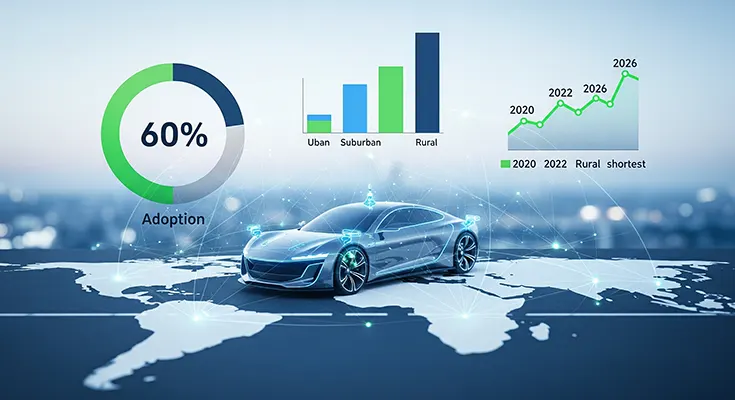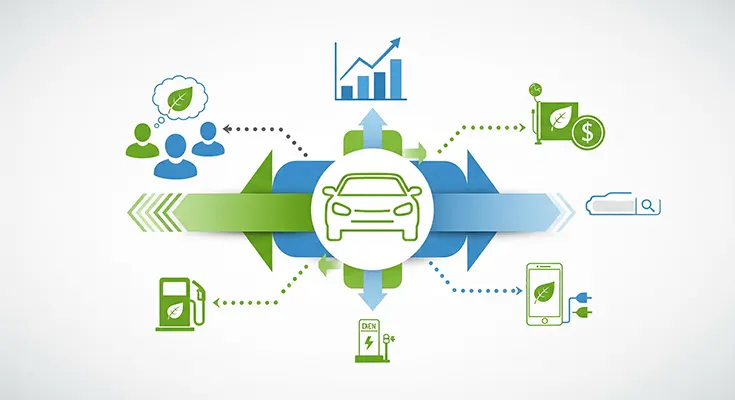As we look toward 2026, the autonomous vehicle (AV) landscape is defined by a clear distinction: the widespread, gradual adoption of advanced driver-assistance systems (ADAS) in passenger cars versus the targeted, rapid growth of fully autonomous technology in specific commercial applications. The year will not see a mass market of truly “self-driving” cars on every street, but rather a significant leap forward in the technologies that underpin that future, driven by a blend of technological maturity, regulatory progress, and a shifting consumer mindset.
The Rise of L2 and L3: The Mainstream Experience
The primary story of AV adoption in 2026 will be the continued integration of higher-level ADAS, specifically what’s known as SAE Level 2 and Level 3 automation.
- Level 2+ as the New Standard: By 2026, a significant majority of new cars sold globally are projected to be equipped with Level 2+ systems. These features, which include adaptive cruise control, lane-keeping assist, and hands-free highway driving (such as Tesla’s Autopilot and GM’s Super Cruise), are becoming a core expectation for new car buyers. Consumers are increasingly willing to pay for the safety, convenience, and comfort these systems provide, seeing them as a logical evolution of modern vehicle technology.
- The Dawn of Level 3: 2026 is poised to be the year Level 3 (conditional automation) vehicles become more commonplace. In this stage, the car can drive itself under specific, limited conditions (e.g., on pre-mapped highways with no rain or snow), and the driver is allowed to take their eyes off the road. With models like the Mercedes-Benz Drive Pilot and BMW’s Personal Pilot L3 system already on the road, more manufacturers will introduce similar capabilities. However, these will remain premium, high-cost options, with their use constrained by strict regulatory and geographical limitations.
Commercial and B2B Applications Lead the Way
While consumer-owned, fully autonomous vehicles remain a long-term goal, the real breakthroughs in full autonomy (Level 4 and 5) will be in commercial sectors.
- Robotaxis and Shuttles: Autonomous taxi services, or “robotaxis,” will see continued expansion in 2026. Companies like Waymo and Baidu will grow their fleets in key urban areas in the U.S. and China, offering a glimpse into a driverless urban future. While still confined to geofenced areas, these services will scale up, benefiting from a business model that provides continuous revenue.
- Autonomous Trucks: The trucking and logistics industry is a prime target for autonomous technology. Pilots of self-driving trucks on pre-defined highway routes are expected to become more widespread in 2026, particularly in countries with large trucking economies like the U.S. The potential to improve safety, efficiency, and address the ongoing driver shortage makes this a highly attractive and commercially viable application.
Key Hurdles Remaining in 2026
Despite the undeniable progress, significant challenges will continue to temper the pace of adoption in 2026.
- Regulatory Frameworks: A lack of clear, consistent, and standardized regulations remains a major bottleneck. Different rules across regions and even cities create a confusing patchwork that complicates the deployment of AVs. While countries like the U.K. are pushing forward with dedicated legislation, a globally harmonized approach is still a distant reality.
- Consumer Trust and Perception: The “psychological” barrier to adoption is a major hurdle. Despite data showing the safety benefits of AVs, public trust remains mixed. Concerns about software glitches, cybersecurity threats, and the ultimate liability in the event of an accident are still top of mind for many consumers.
- Technological and Economic Challenges: The technology for Level 4 and 5 autonomy is still incredibly complex and expensive. The cost of the sensor suite (LiDAR, radar, cameras) and the high-performance computing required puts a high price tag on these systems, making them unfeasible for most passenger vehicles.
In conclusion, the 2026 forecast for autonomous vehicle adoption is a story of two parallel paths. The mainstream market will continue its journey of incremental automation, with more advanced driver-assistance systems becoming standard in new cars. Simultaneously, the truly transformative, fully autonomous technology will remain focused on controlled, commercially viable applications. This dual approach is the pragmatic way forward, building consumer trust and gathering critical data and experience while the industry races to clear the remaining technological, regulatory, and economic hurdles that separate the present from a truly driverless future.













